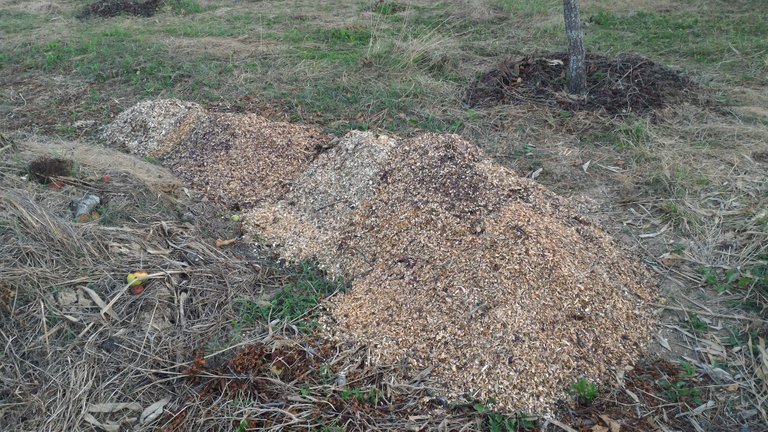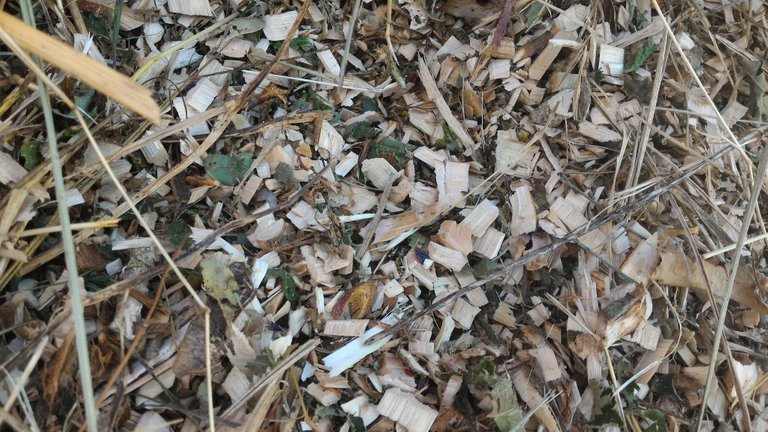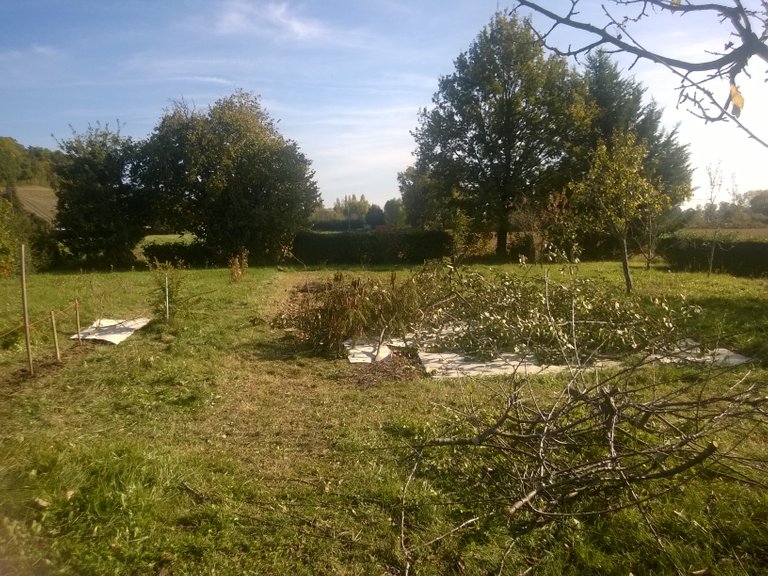This is the final installment of the Auberge Garden. Check out the other parts of the series:
Part 1: Laying the Foundations
Part 3: Observing the Landscape
We had a lot of wood to deal with, and still quite a few trees to prune. We had been reading of the various benefits of using wood chips as both mulch, and as the basis for planting areas. Knowing we wouldn’t get back there for some time, we could make the most of that wait and leave some wood chips to decompose for a good long time. It also meant there would be that much less grass to deal with next time.
So we got ourselves a small woodchipper delivered. I say small, it is louder than hell and chews through branches quick smart. It has been affectionately dubbed ‘the gobbledok’.
Having a monstrous petrol powered machine as part of our regular processes is not ideal in the long term. The noise and the upkeep and the reliance on petrol aren’t great. However, it lets us lay the foundations down, get the garden mulched, and then we can see how often we use it from year to year. If we find it isn’t getting used as often, or we source a regular supply of wood chips, we can always sell it on.
We had already done some chopping of earlier prunings by hand, and laid them around trees or surrounding the hugels as a path (covering any bare soil). It was hard work, lots of bending, and the piles of branches kept coming. We weren’t too fussed about parts that couldn’t go through the chipper. Gnarly branches we’ve kept for firewood or just lobbed by the hugels. It had trouble with the tightly knitted growth of the hedges, so these were hastily chopped by hand and laid alongside the hugels as paths.

It was quite exciting to see the output of the chipper. The colours and smells of the different woods and leaves was quite something. It made short work of the piles of branches.

Dealing with the leafy material and smaller sticks was a small problem. They shredded in the chipper ok, but had to be interspersed with drier material. Compared to the volume of chips produced by feeding a branch through, those smaller pieces hardly seemed worth the effort. So the solution was to just leave them to compost as they were, or layer them with the woodchips on the garden beds. They may not break down as quickly as the woodchips whose exposed surface area is greater, but there is probably a benefit of having the beds made up of material that breaks down at different speeds. The woodchips might go first, but then there is still leaf mold and sticks to feed the soil when they are broken down.
So we tried it a few different ways – a layer of woodchips over the sticks and leaves, sticks and leaves over woodchips. We have made beds at different thicknesses. We even did our herb patch with just sticks and leaves topped off with grass clippings. Time will tell how much difference is made.

The small mounds that we didn’t get around to using straight away were hot and moist inside within a couple of days. After a few seasons we can only imagine the progress.
What we’re hoping to see when we get back to the Auberge is beds that are mostly broken down, with nice loose topsoil covered in mostly decomposed mulch. There will probably be a few sticks left in there. All in all, they should be ideal for immediate planting.
 With so much space, it was always a question of where to put them for best effect. Over the weeks, in our trips from the house and barn to various corners of the garden we had trodden a curious network of trails into the grass. We laid the beds between our walking paths. This let us maximise space, and use it efficiently. It also gives an organic feel to the garden layout, as though it occurred naturally. It’s also user-friendly, as we can navigate the garden without needing to go around garden beds and plantings. We wouldn’t have thought to do it that way if we didn’t have time to observe the layout properly. Likely we would have ended up putting beds in rows, which would have been neat but not necessarily as effective. Now we have a bunch of beds in different places, all with their own configurations of light and shade, angles, and accessibility from the house.
With so much space, it was always a question of where to put them for best effect. Over the weeks, in our trips from the house and barn to various corners of the garden we had trodden a curious network of trails into the grass. We laid the beds between our walking paths. This let us maximise space, and use it efficiently. It also gives an organic feel to the garden layout, as though it occurred naturally. It’s also user-friendly, as we can navigate the garden without needing to go around garden beds and plantings. We wouldn’t have thought to do it that way if we didn’t have time to observe the layout properly. Likely we would have ended up putting beds in rows, which would have been neat but not necessarily as effective. Now we have a bunch of beds in different places, all with their own configurations of light and shade, angles, and accessibility from the house.

Near the house is an acacia tree that provides good afternoon shade. We laid down more leafy material and grass for a herb patch, and planted lavender, thyme, lemon verbena, tarragon, sage and chives. Annual herbs and lettuces we’ll plant around the edges. We also planted lavender shrubs among the fruit trees and next to some of the new garden beds. These should thrive in our absence and keep the bees happy.
So we had come a long way in a few weeks. The garden was cleaned up and beds laid. We’d even done some planting. Spending time on the land was fantastic for getting a feel for how much resources we had, and how it behaved over a season.


We recently came across a photo taken in October, as we’d left the Auberge last autumn. Seeing how lush and green it becomes makes us excited to get back and continue the journey.

We share many interests, it seems. Before moving to Florida, where I have only a patio, I lived on a small farm in Colorado. I was just starting to get into mulching my first garden there (prior to the farm, we had lived in the mountains where it was too high and cold for much growing) when I had to pick up and move. Have you seen the video, "Back to Eden"?
Sounds like it! Yes, we've seen it, and taken a lot of good information from it. Paul can be a bit over the top, and falls back a lot on the 'design' concept over evolution, which I don't have much time for, but he also has a lot of practical solutions, and a lot of genuine scientific facts that run contra to 'accepted' wisdom. It's an interesting intersection. From a scientific background myself, I make sure to validate things with my own research, so I pick and choose from every source I encounter, whether it's books or videos or anything else.